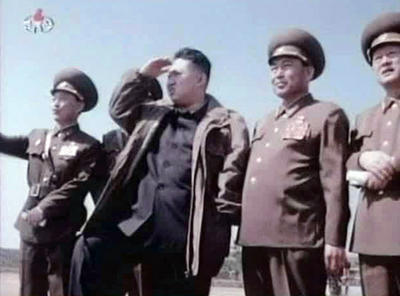The mass expressions of grief in North Korea witnessed throughout this time have considerable meaning — while they may seem shocking to foreigners, the displays cannot be written off as insincere. Collectivism is pervasive in North Korea, and this affects the way emotions are displayed. But to deny that North Koreans widely perceive their country’s leader as its father — in line with the Confucian tradition — and that people are indeed mourning Kim Jong-il would be unfair.
The phenomenon has its roots in the original North Korean political culture, which ascribes a special role to the country’s leader, and has a legitimising impact on Kim Jong-un’s claim to power. It is true that Kim Jong-un is very young, has a limited record of involvement in state affairs, and has only held the status of official successor for slightly over a year. Still, he learned a lot over this time, acting as his father’s apprentice, and has made no blunders in the process. Importantly, the nation actually sees him as the successor.
Obviously, both Kim Jong-un and North Korea face tough challenges. Kim’s elder peers — the stalwarts from his father’s inner entourage — will certainly do their best to help him during the initial phase of his rule, but this interaction should not be interpreted as evidence that Kim is only the nominal leader. For North Korea, combining the leader’s singular status with collectivism in top-level decision making is a long-standing tradition, though the balance between the two elements fluctuates.
Predictions that North Korea will shortly plunge into chaos and that a tide of infighting will sweep over its leadership are completely groundless. North Korea watchers are fully aware of the country’s robust political stability, and the development of organised opposition or public protests of considerable proportions are nowhere in sight.
It is natural that divisions over individual issues exist in North Korea’s administration, but the country’s constant external threats help to further cement its administration. Pyongyang is mindful of its opponents’ strategy — which focuses on inducing regime change in North Korea — and monitors the emergency military planning of the US–South Korea alliance. The two countries certainly had special plans to set in motion in the event of Kim Jong-il’s sudden death. The North Korean political elite have no illusions as to their chances of survival in the case of a regime change. And more than any ideological directive, such concerns make the elite maintain full cohesion, stay loyal to the country’s leader and ruthlessly suppress any tendencies toward internal discord.
At least in the mid-term, we should see complete continuity in North Korea’s foreign and domestic policies, with its young leader likely to emphasise allegiance to his father’s legacy. Pyongyang’s approach to key foreign policy issues, including its involvement in the Six-Party Talks over the Korean Peninsula’s nuclear problem, will therefore remain unchanged.
It should also be noted that the recent developments in North Korea opened up new opportunities for its opponents, and time will tell how these opportunities might be seized. No doubt, the US could assume the main role in rebuilding bridges with Pyongyang. The switch from a condition bordering on war to one of fruitful cooperation in the wake of Kim Il-sung’s death and the signing of the 1994 Agreed framework provide a vivid example of such flexibility. The Bush administration made a similar manoeuvre in 2007.
Hillary Clinton’s recent visit to Burma was a bold initiative, and an analogous breakthrough in relations with North Korea may yet be brewing (the precedent being Madeleine Albright’s 2000 visit to Pyongyang). In any case, the current situation offers unique opportunities to break the stalemate in US-North Korean and inter-Korean relations.
In sum, North Korea’s domestic situation remains stable, with Moscow and Beijing firmly encouraging peace and stability on the Korean Peninsula. The North Korean approach to key foreign policy issues, including its relations with Russia, will remain unchanged. The last foreign visit paid by the late Kim Jong-il was a tour of Russia, during which he met with Russian President Dimitry Medvedev in August 2011. It is a safe bet that cooperation between Russia and North Korea will continue, and that the key bilateral and multilateral economic projects — including the Russia-North Korea-South Korea gas pipe line and railroad construction — will be implemented in this same framework, as planned.
Alexander Vorontsov is Head of the Korean and Mongolian Studies Department, the Institute of Oriental Studies, Russian Academy of Sciences.

